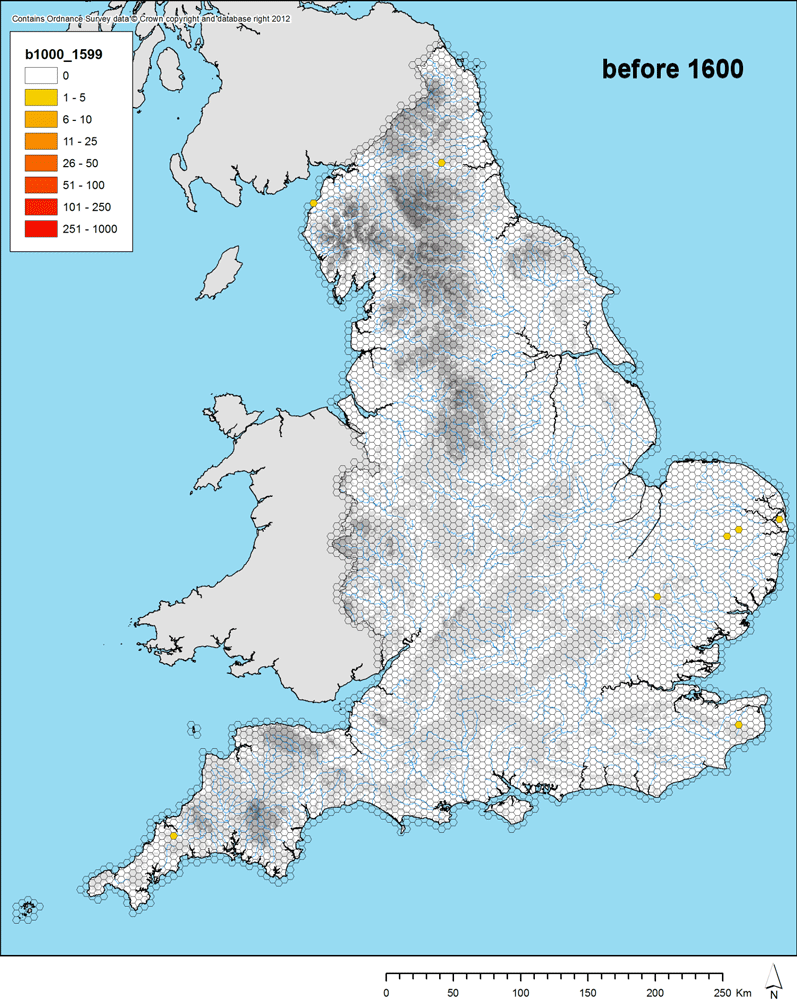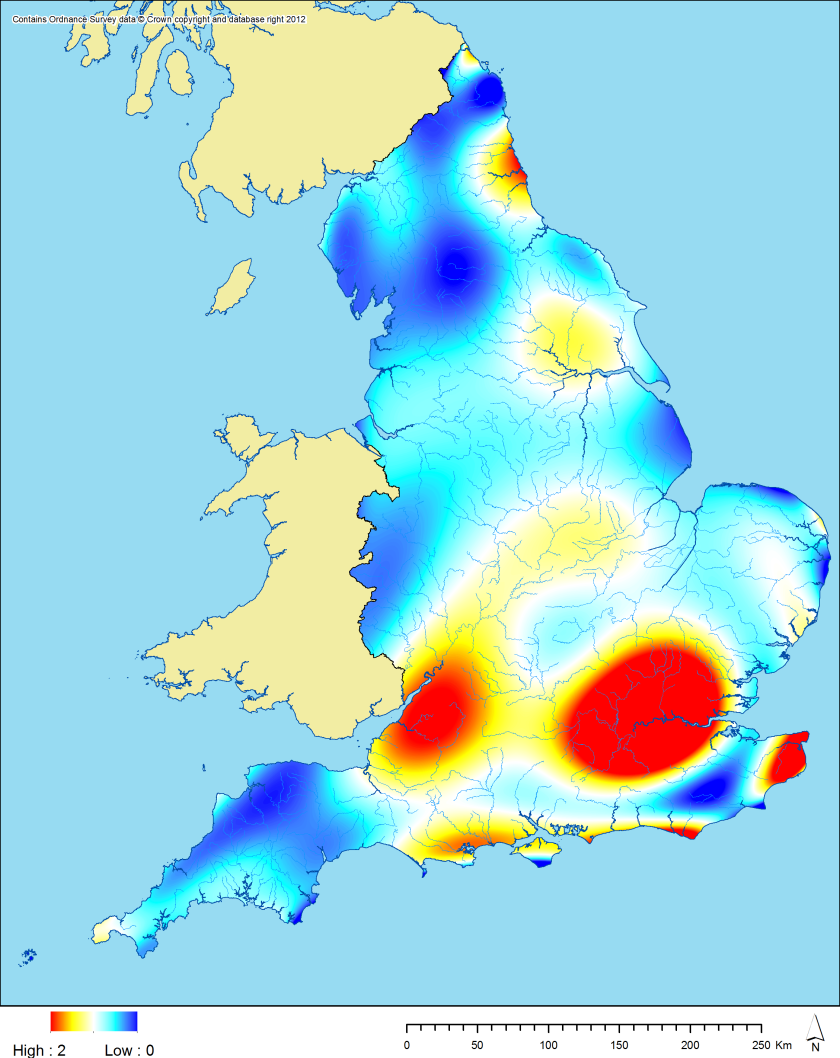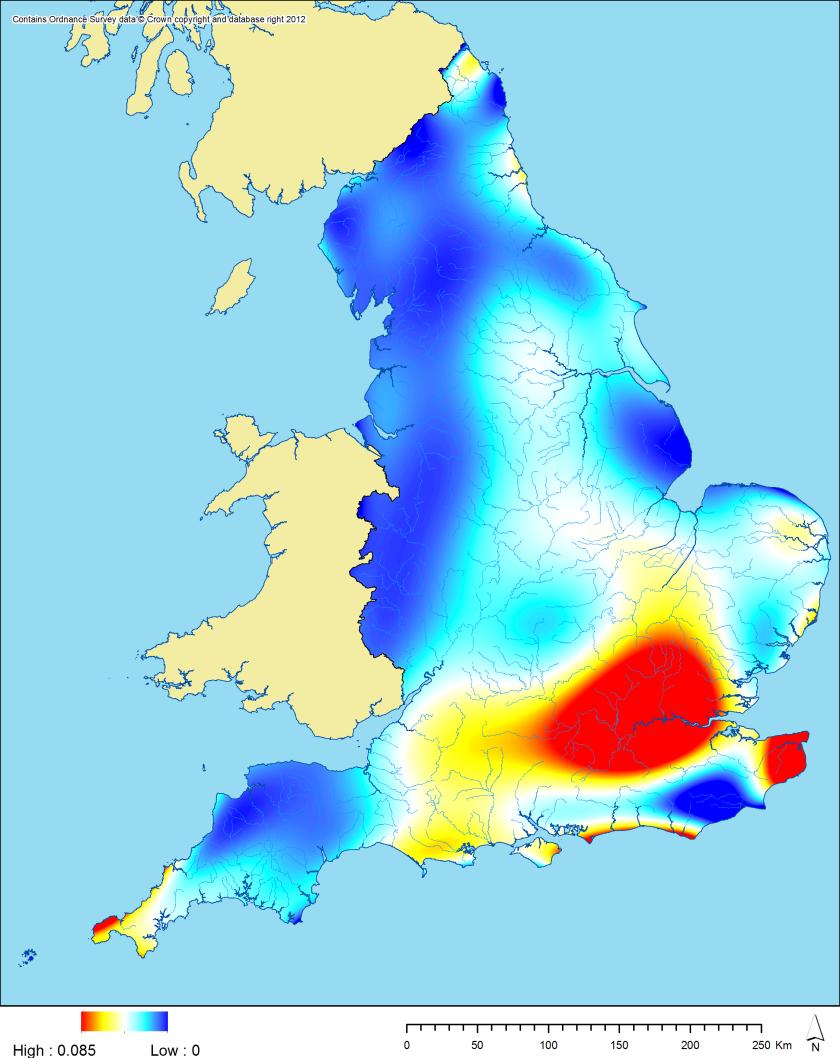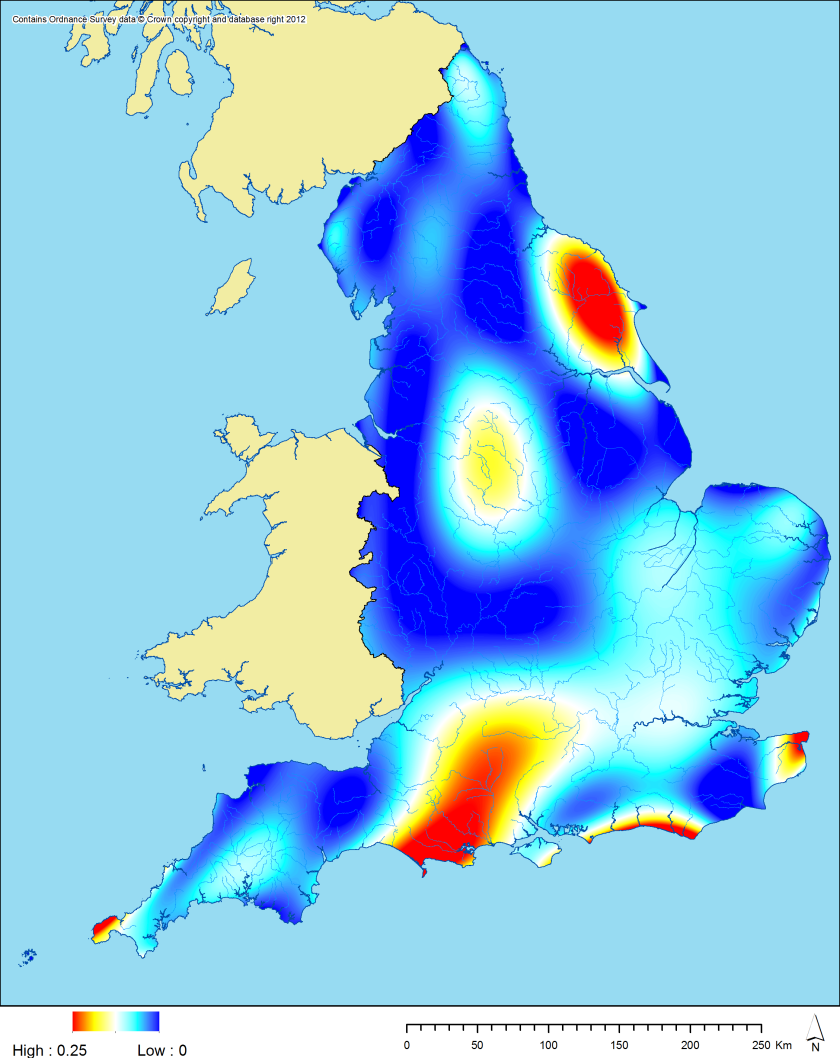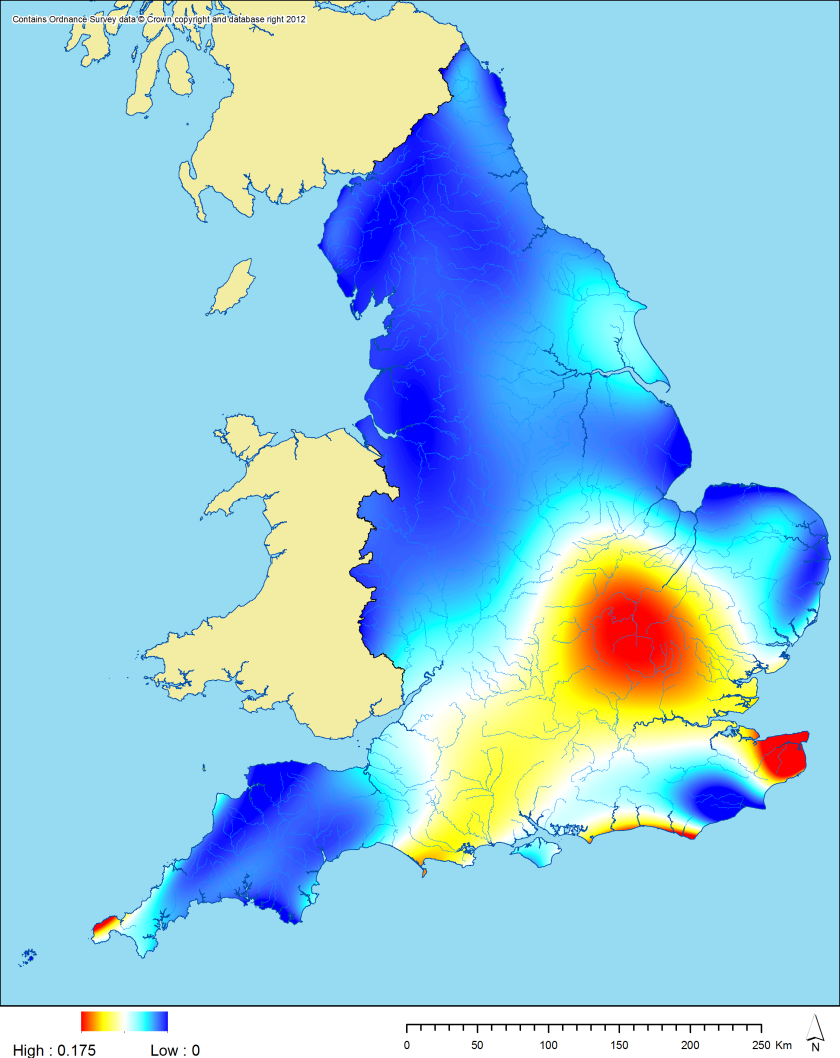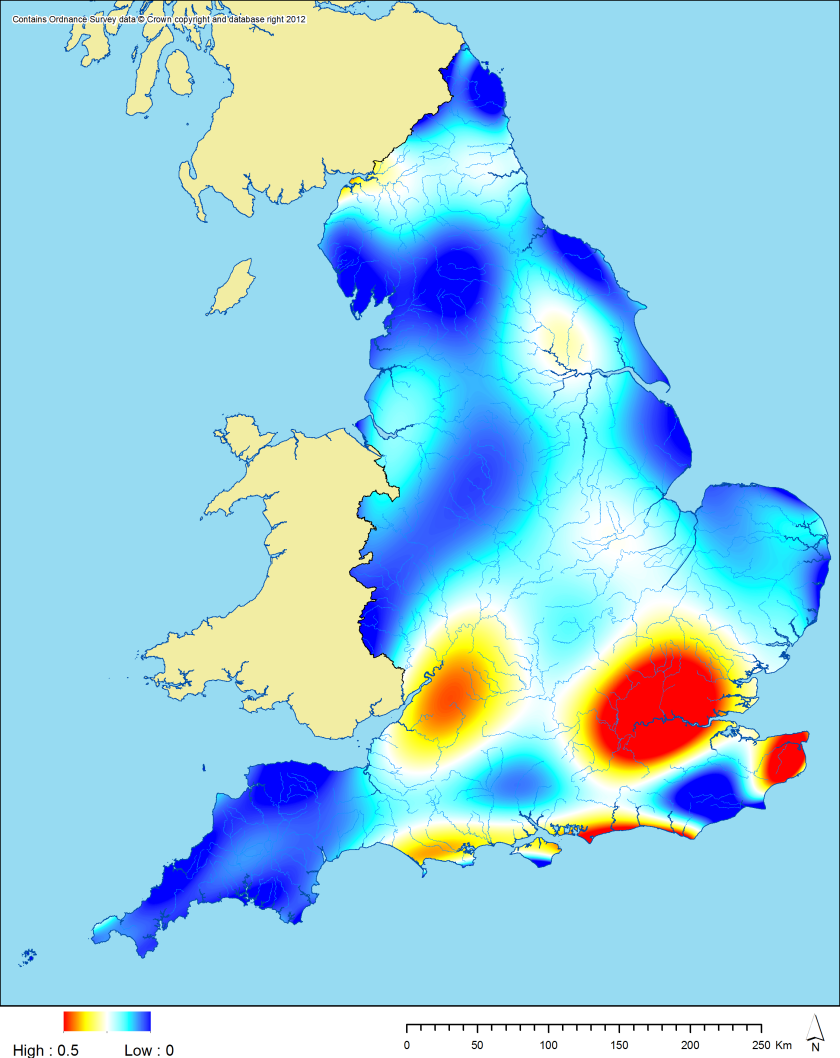Firstly, EngLaID is now on Twitter! Our handle is @englaid_oxford if you want to follow us.
Now onto business. I’ve been recently starting to think about how we might analyse field systems of our period in GIS, initially in order to test if patterns seen by previous research projects look true and then to try extending methodologies developed to fresh areas. In order to undertake this, I am using NMP data, as that is the best source we have for widespread transcriptions of field system layouts.
We decided to start with the Salisbury Plain Training Area (SPTA) as that was the subject of an excellent and very detailed study by a team at English Heritage (and RCHME?) (McOmish et al. 2002). In six specific areas, they discovered areas of co-axial field system aligned (in five of the six cases) in an approximately SW – NE direction (the exception, Maddington, was aligned on 62˚ east of north) (McOmish et al. 2002: Fig 3.4; 54).
In order to test these conclusions and, if validated, to see if I could come up with a methodology for analysing further field systems outside of the SPTA, I redrew these six areas of field system in ArcMap and then calculated the length and bearing (from 0˚ to 180˚ as there is no direction of travel implied) of each section of line. Using a mixture of Python and R, I then produced a series of radial graphs, showing the density of line bearing / length for each field system against the supposed dominant axis.
Below, you will see a plan of each field system with the redrawn features in red (green / purple / black features are the original NMP layers, apologies to the colour blind!). Then each will be followed by a radial graph of the line lengths / bearings. Each black line is a single section of field boundary. The blue line shows the apparent orientation defined by McOmish et al. Then the red shading shows the density of of the black lines in a series of 15˚ / 100 metre bands: the more saturated the red, the more lines present. If the orientations previously defined were correct, then we would expect to see the red sections of the graph clustering around the blue line and at 90˚ perpendicular to the blue line.
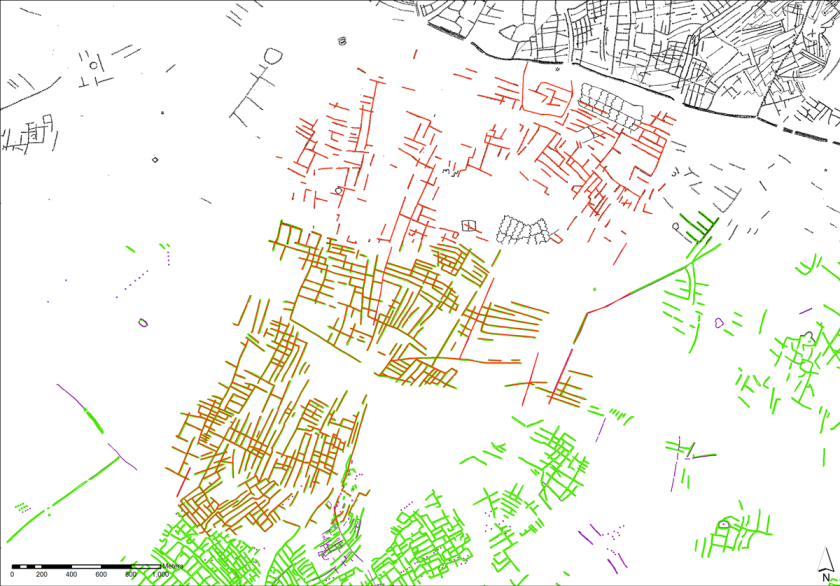



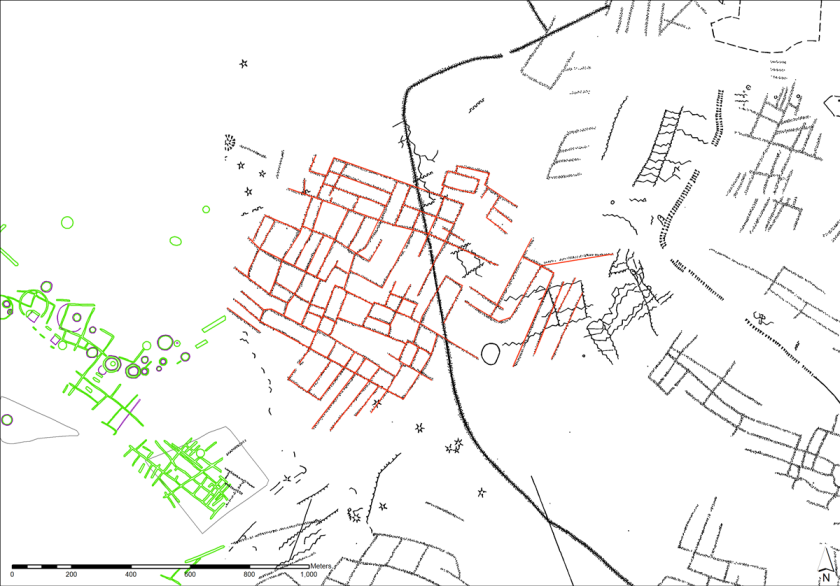

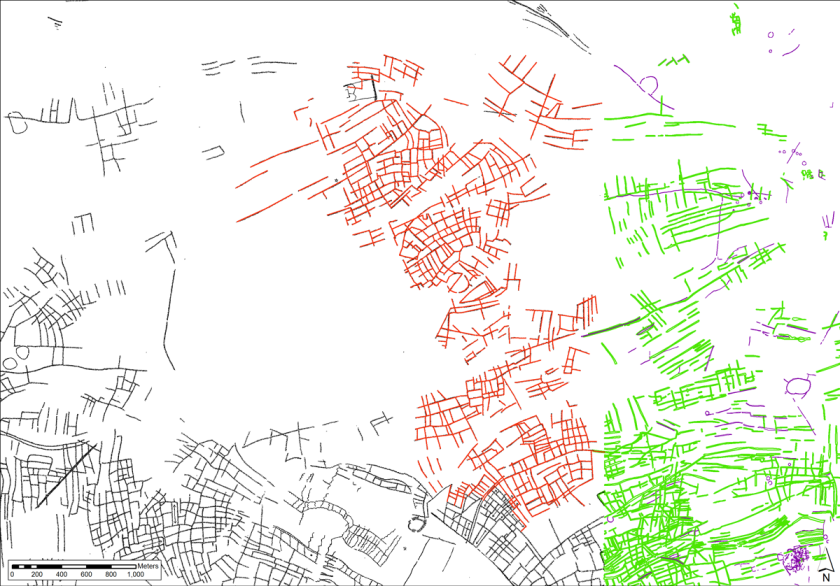



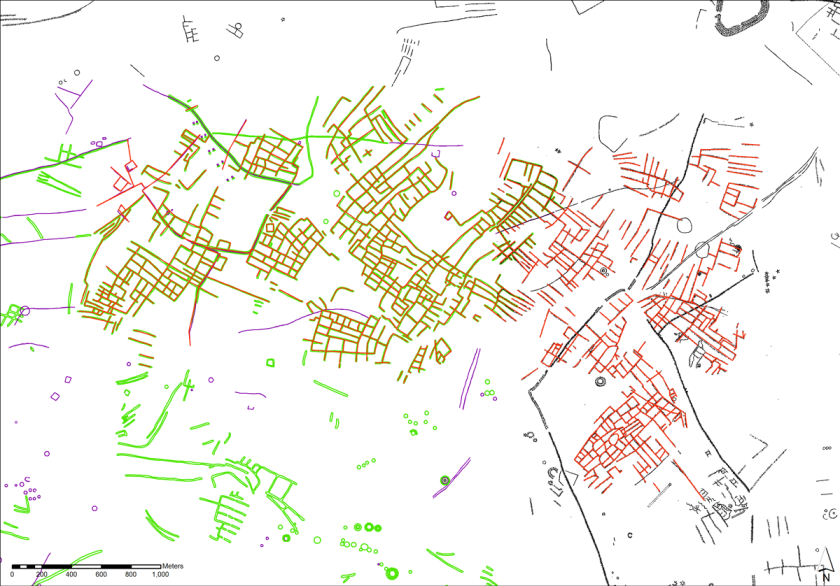

So, does this tell us anything? I feel that there is strong support for the previously identified alignment at Orcheston, Milston Down and Figheldean and reasonable support at all of the other three in addition. Netheravon has a weaker appearance, but this is not surprising due to the section in the south east of the area that does appear to be on a different alignment. Interestingly, Maddington shows some bias towards its previously defined alignment, but less bias towards the 90˚ perpendicular alignment.
After histogramming the Riley’s Terrain Ruggedness Index for these areas, I could see that all of them are relatively flat, so it would have been easier for people in the past to ignore local topography when laying out their fields. I now want to apply this methodology to other areas (as I think it works!) and see if any different results come out, especially in areas with more rugged topography. I will do this in the New Year.
Happy Xmas everyone!
Chris Green
References:
McOmish, D.; Field, D.; Brown, G. 2002. The field archaeology of the Salisbury Plain Training Area. Swindon: English Heritage.

